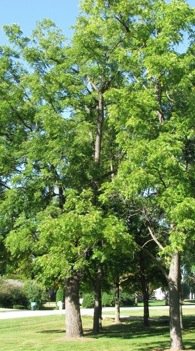i-Tree Vue (legacy)

Information on the i-Tree Vue page is provided for users who choose to use the Vue application. i-Tree Landscape will be replacing Vue as the platform for spatial analyses using NLCD imagery and eventually UTC data.
i-Tree Vue allows you to make use of the freely available National Land Cover Database (NLCD) satellite-based imagery to assess your community's land cover, including tree canopy, and some of the ecosystem services provided by your current urban forest. The effects of planting scenarios on future benefits can also be modeled.
Vue users can apply regional adjustments to refine canopy and impervious estimates based on research. In addition, a simple clipping tool allows users to refine basic area of interest boundaries from NLCD images within the Vue application. Interactivity with Google Maps allows for improved NLCD image interpretation.
The Executive Summary Report (VUE Executive Summary Report Example) offers a quick snap-shot of relevant ecosystem service estimates and cover characteristics.
NLCD data consists of (3) types of imagery (NLCD Clipped Imagery Examples) derived from Landsat satellite data:
- 29 Land Cover classifications
- Percent Impervious Cover
- Percent Tree Canopy
Each imagery data set has a resolution of 30 meters.
i-Tree Vue allows everyday users to easily utilize the imagery datasets and quickly assess their region's broad characteristics over these three areas.
In addition, i-Tree Vue will allow users to model basic scenarios producing simple analyses outputs including:
- Carbon Storage
- Carbon Sequestration
- Pollution Removal
- Tree Canopy grow-out modeling
Visualization and simple reporting of the imagery data are key components of this tool.
Credits/Contact Info
i-Tree Vue was conceived and developed by Alexis Ellis (US Forest Service, Northern Research Station), Mike Binkley (The Davey Institute at The Davey Tree Expert Company) and David J. Nowak (US Forest Service, Northern Research Station).